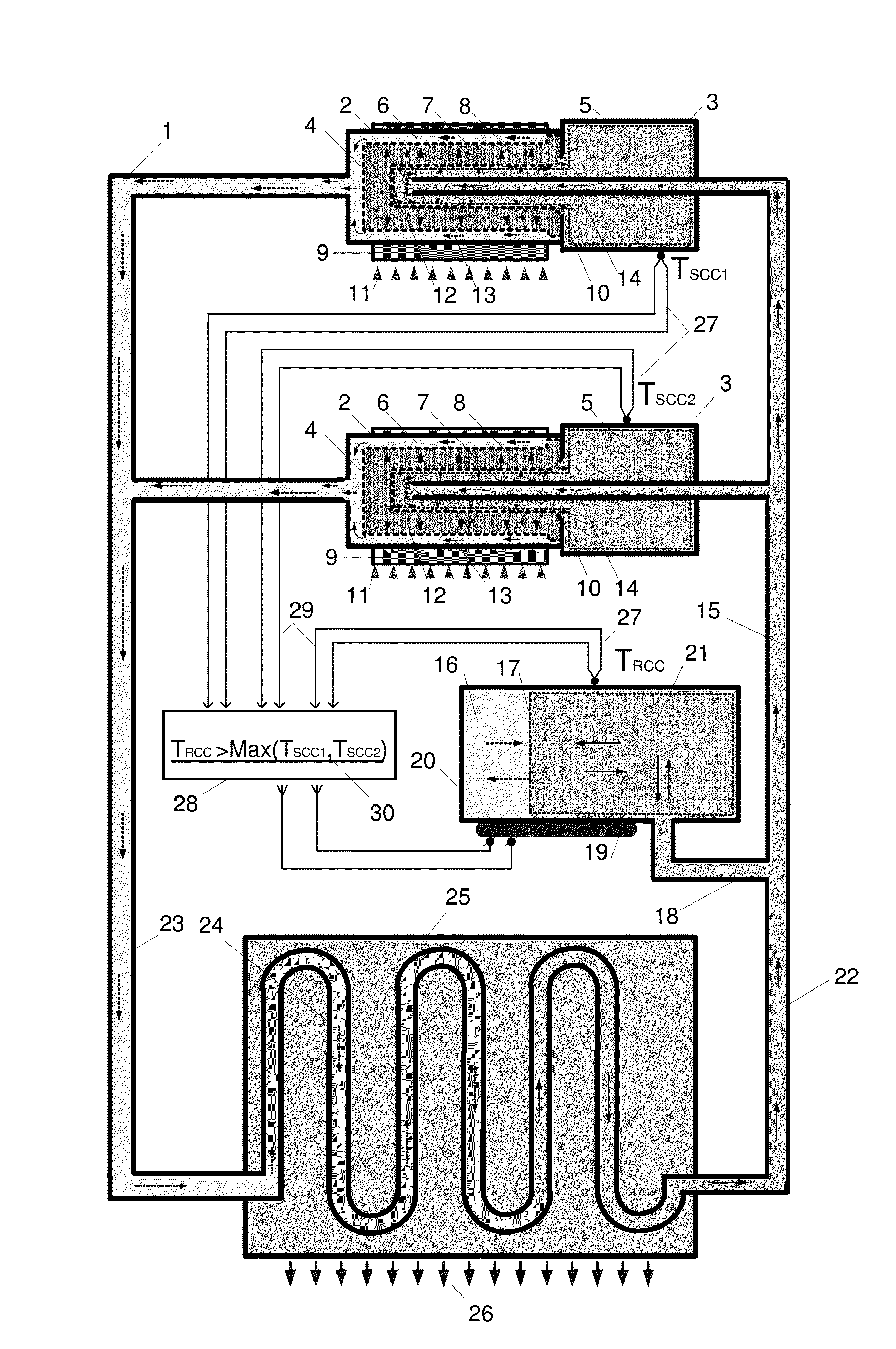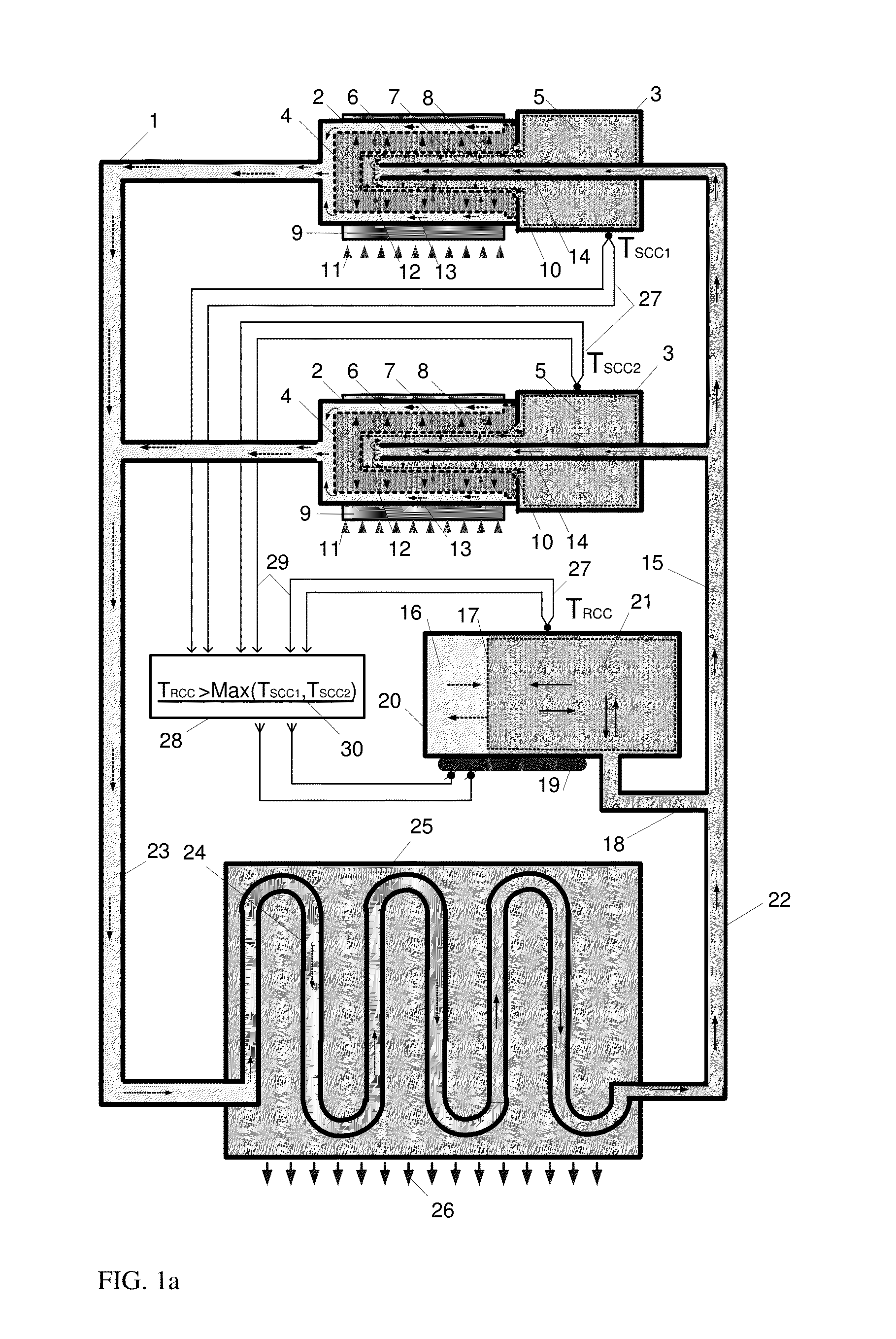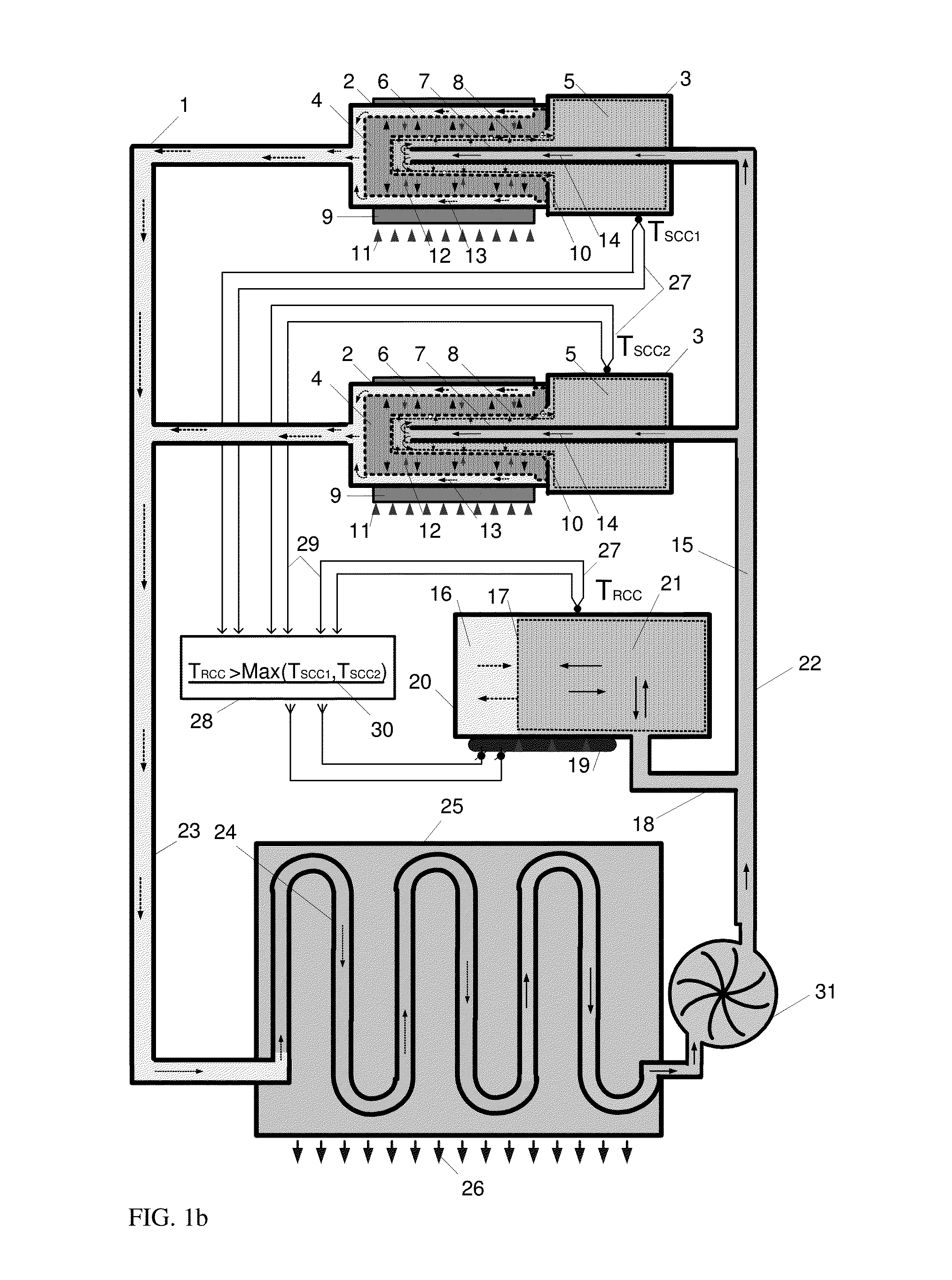This makes thermal control a key matter in the design and operation of a spacecraft with a significant weight, power and cost
impact in the overall spacecraft budget.
However, many applications require thermal control of large
thermal contact surface payloads or multiple remotely located heat sources.
However, shutting down the
active cooling of one condenser would result in an abrupt decrease in the maximum transport capability of the device.
Despite evident advantages of LHP systems having multiple evaporators designed to operate over a wide temperature range, there exists a limitation on the number of evaporators that can be reasonably used, as each evaporator comprises a compensation chamber.
This leads to a limitation on the number of evaporators that can be used in these systems.
It is practically impossible to build an LHP
system with more than three evaporators.
However, only one of the compensation chambers has a vapor-liquid two-phase condition during operation regardless of how many are under
temperature control.
Test results showed that when one of the evaporators has a very low
heat load, a sudden vapor generation on the inner surface of the capillary pump was observed, stridently increasing the parasitic
heat leak to the compensation chamber which results in a higher operational temperature of the loop.
This causes a
hysteresis control problem for the loop that is hard to predict or prevent.
Also, it was found that situations when the liquid distributes itself among the compensation chambers (trying to occupy the lowest pressure spots) can lead to unstable operation of the
system.
Furthermore, a problem of
controllability for multi-evaporator LHP systems arises when the amount of evaporators and compensation chambers increases.
Therefore, it is possible to conclude that an expandability limitation is the main problem in multi-evaporator LHP systems, as shown in USSR Patent 1395927, such that two evaporators are used or only three evaporators maximum for narrow temperature ranges.
A secondary problem presented by these systems too is poor
controllability.
The growing of a
vapor bubble on the inner surface of the capillary pump leads to the pump dryout and, finally, to the failure of CPL operation.
The two-port evaporator (one liquid inlet and one vapor exit) initially used in CPLs generally experienced dry-out due to the appearance of vapor in the
liquid core during start-up and transient regimes.
The following conclusions summarize the issues related to CPL reliability:CPL design should never allow bubbles to form in the liquid side of the loop, but it is quite difficult to fully avoid such operational
scenario in actual HTLs;CPL requires a
start up evaporator to clear the vapor channels in the main evaporators before heat is applied to them;reducing the
diameter of the CPL evaporator elements leads to many unexpected difficulties: the design with thinner capillary pump walls leads to higher probability of
vapor bubble formation inside of the
liquid core of the evaporator and as consequence to failure of CPL operation;
This limitation is similar to the heat pipes existing in conventional art.
Other significant limitations of this design are complexity and integration difficulties which lead to problems of system expandability,
scalability and part
standardization.
Large
diameter connecting tubing leads to inflexible system and high requirements for tolerances for integration purposes.
However, in this design, the capillary link supplies all amount of liquid that is needed for the evaporator, which leads to significant limitations for rates of change of heat source power or / and
heat sink temperature.
Other
disadvantage of such an approach is the low thermal conductance of evaporators due to the permanent presence of
vapor phase in the evaporator core.
Capillary evaporators linked to the
liquid line cannot provide a reliable vapor tolerance and, therefore, this design presents the drawback of the necessity of an additional special evaporator with dedicated power source to provide the loop circulation.
Tests indicated that the system was not very reliable during
power cycling.
However, as the functional evaporators input power decreased, liquid movement forced by
capillary action on the auxiliary evaporator was not enough to efficiently remove all vapor bubbles from the evaporator core to prevent vapor blockage of the capillary pump (dryout) after sudden increase of the evaporator power.
On the other hand, sudden power reduction leads to temporary fluid flow break in the condenser until new stable temperature /
pressure equilibrium was established in the system.
As a result, nominal forward direction flow was disrupted.
During this reversal flow, vapor bubbles could then accumulate or even expand in the evaporator capillary pump core, therefore causing evaporator dry-out and failure of the system.
Despite general successful results obtained during testing, the operation was verified in relatively limited conditions: mostly in
horizontal orientation, evaporators were located close to each other, and therefore with similar hydraulic resistance of lines.
Therefore, such configuration was not representative of the conditions of potential spacecraft thermal control application when evaporators and remote reservoir are spatially separated, and the rate of evaporator's response on variations of the input power and
heat sink conditions depend on the length of the lines connecting these elements.
Therefore, the ability for temperature control was not properly verified.
Despite certain advantages, the necessity of the supplementary loop circulation means can be considered as a drawback because of the active character of critical design components which reduces the reliability and
life time of the system.
The main drawback of this approach is the existence of the additional evaporator and its active character.
In fact, this solution is needed only for a LHP with not properly designed secondary pump.
There are no means to guarantee vapor tolerance of the evaporators.
The vapor parasitic
heat leak intolerance, which can lead to total failure of the system in heat transfer, is the main problem in the development of capillary driven multi-evaporator two phase thermal control systems.
Various methods have been proposed and investigated to solve the problem; however, the existing technical solutions still cannot guarantee reliable and stable performance in different actual thermal conditions of spacecraft operation.
 Login to View More
Login to View More  Login to View More
Login to View More 


